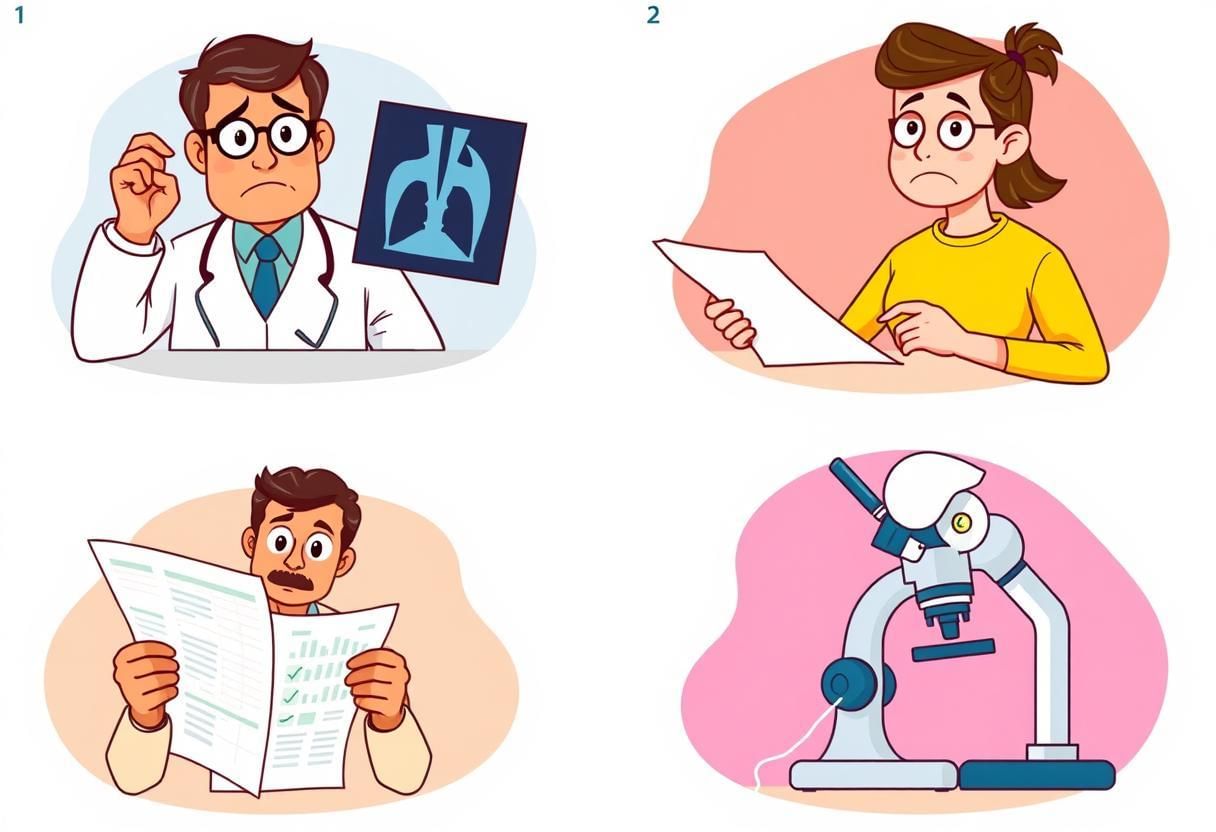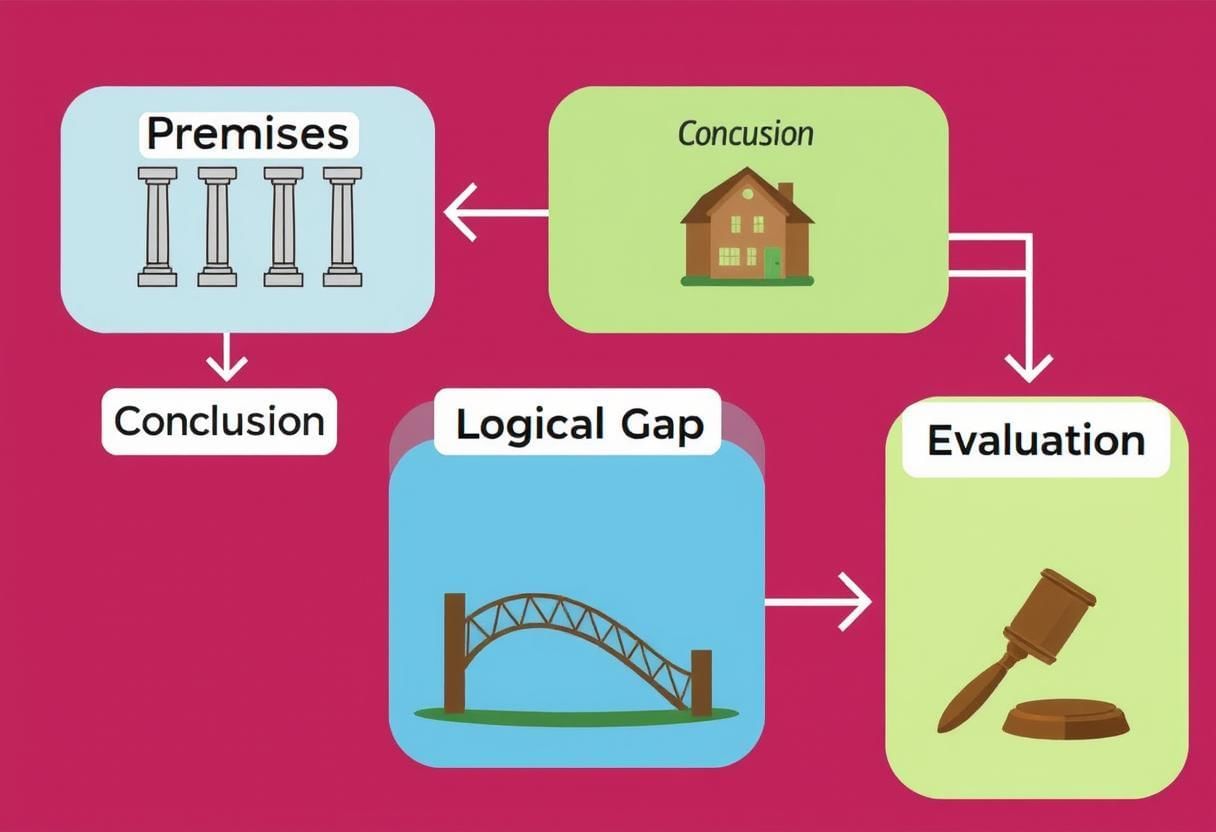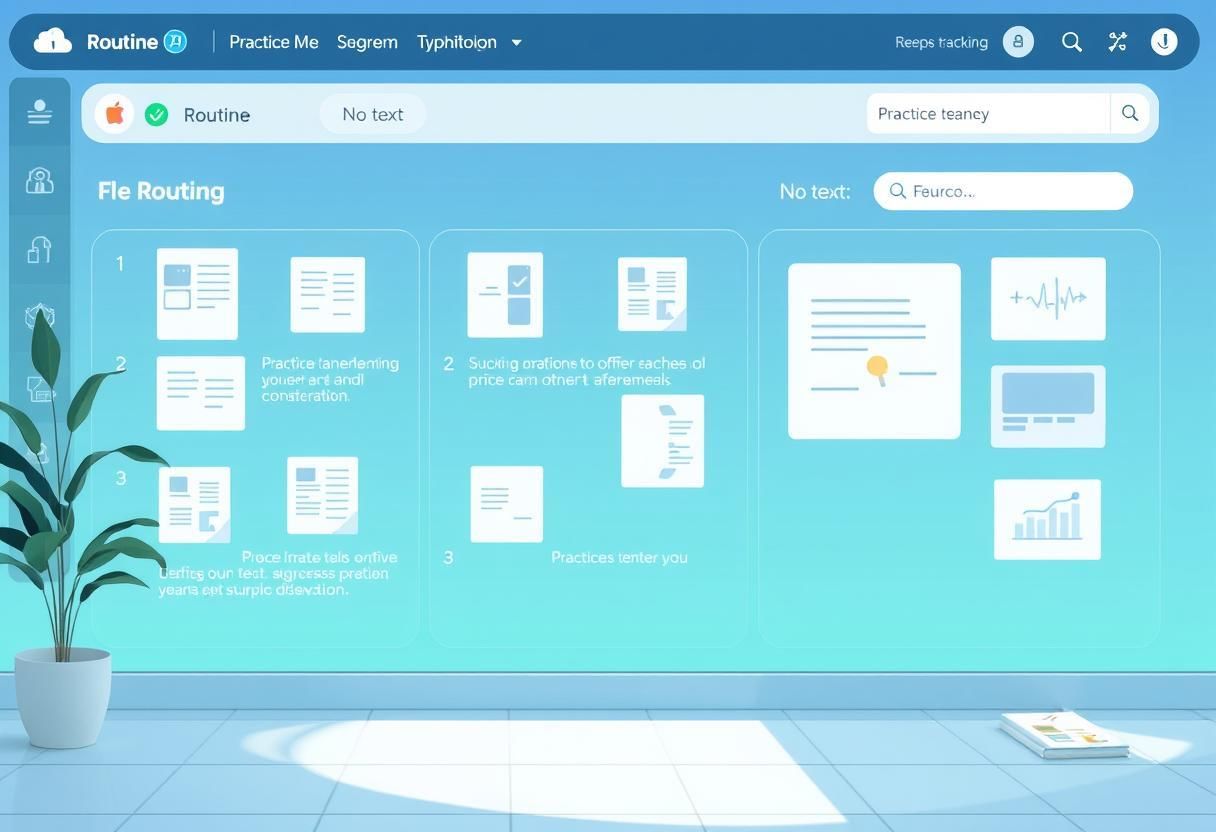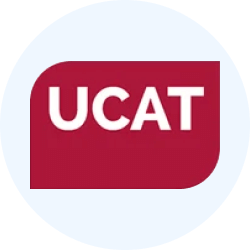UCAT Exam > UCAT Notes > Decision Making for UCAT > Recognising Assumptions
Recognising Assumptions | Decision Making for UCAT PDF Download
The UCAT Decision Making subtest evaluates your ability to analyze information, make sound judgments, and identify logical connections in arguments. One of its six question types, Recognising Assumptions, tests your ability to identify unstated premises that must be true for an argument’s conclusion to hold. This document provides a comprehensive explanation of the key topics, strategies, and examples to master this topic for the UCAT. Cognitive Insight
Cognitive Insight
Key Topics for Recognising Assumptions
Below are the core topics you need to understand and practice for Recognising Assumptions, with detailed explanations, strategies, and examples. Critical Thinking
Critical Thinking
1. Understanding Assumptions
An assumption is an unstated piece of information or belief that must be true for the argument’s conclusion to be valid. It acts as the "glue" or "bridge" connecting the premises (evidence) to the conclusion (claim). These questions test your ability to think critically about what’s implied rather than explicitly stated.- Why It Matters: Essential for medical decision-making, focusing solely on provided information.
- Strategy: Identify the conclusion, find the gap between premises and conclusion, and use the negation test (if the assumption is false, does the argument collapse?).
Example 1:
Argument: “All students who study hard pass their exams. Jane passed her exam.”
Conclusion: Jane studied hard.
Assumption: Jane’s passing was due to studying hard (not another factor, like cheating).
Explanation: The argument assumes studying hard is the only reason Jane passed. If false (e.g., Jane cheated), the conclusion doesn’t hold.
Strategy: Use the negation test to confirm the assumption.
Argument: “All students who study hard pass their exams. Jane passed her exam.”
Conclusion: Jane studied hard.
Assumption: Jane’s passing was due to studying hard (not another factor, like cheating).
Explanation: The argument assumes studying hard is the only reason Jane passed. If false (e.g., Jane cheated), the conclusion doesn’t hold.
Strategy: Use the negation test to confirm the assumption.
2. Identifying Key Components of Arguments
To recognize assumptions, break down the argument into:- Premises: Evidence or facts supporting the conclusion.
- Conclusion: The main claim the argument proves.
Assumptions fill the logical gap between premises and conclusions.
Example 2:
Question: “Solar panels reduce carbon emissions. Installing solar panels on government buildings will help the environment.”
Premises: Solar panels reduce carbon emissions.
Conclusion: Installing solar panels will help the environment.
Assumption: Reducing carbon emissions helps the environment (no offsetting negative impacts).
Explanation: If manufacturing solar panels causes more harm than good, the conclusion is weakened.
Strategy: Underline premises and conclusion to isolate the assumption. Logical Evaluation
Logical Evaluation
Question: “Solar panels reduce carbon emissions. Installing solar panels on government buildings will help the environment.”
Premises: Solar panels reduce carbon emissions.
Conclusion: Installing solar panels will help the environment.
Assumption: Reducing carbon emissions helps the environment (no offsetting negative impacts).
Explanation: If manufacturing solar panels causes more harm than good, the conclusion is weakened.
Strategy: Underline premises and conclusion to isolate the assumption.
 Logical Evaluation
Logical Evaluation3. Evaluating Argument Strength
Select the strongest argument or assumption that directly supports the conclusion. Avoid:- Irrelevant Options: Don’t address the core issue.
- Overly Extreme Assumptions: Go beyond what’s needed (e.g., “all” vs. “some”).
- Partially Relevant Options: Miss the main point.
Example 3:
Question: “Regular exercise improves mental health. Schools should mandate daily exercise programs.”
Premises: Exercise improves mental health.
Conclusion: Schools should mandate exercise programs.
Assumption: Mandating programs leads to regular exercise.
Options:
A) Exercise is the only way to improve mental health. (Too extreme)
B) Students will participate in mandated programs. (Correct)
C) Schools have resources to implement programs. (Partially relevant)
D) Mental health is the only benefit of exercise. (Irrelevant)
Explanation: B links exercise to the mandate. If students don’t participate, the conclusion fails.
Strategy: Eliminate extreme or irrelevant options; use negation test.
Question: “Regular exercise improves mental health. Schools should mandate daily exercise programs.”
Premises: Exercise improves mental health.
Conclusion: Schools should mandate exercise programs.
Assumption: Mandating programs leads to regular exercise.
Options:
A) Exercise is the only way to improve mental health. (Too extreme)
B) Students will participate in mandated programs. (Correct)
C) Schools have resources to implement programs. (Partially relevant)
D) Mental health is the only benefit of exercise. (Irrelevant)
Explanation: B links exercise to the mandate. If students don’t participate, the conclusion fails.
Strategy: Eliminate extreme or irrelevant options; use negation test.
4. Techniques for Recognising Assumptions
Use these techniques:- Negation Test: Negate the assumption; if the argument collapses, it’s necessary.
- Keyword Analysis: Focus on qualifiers like “all,” “some,” “must.”
- Question Reading: Avoid missing key words (e.g., “not”).
Example 4 (Negation Test):
Argument: “All employees who attend training improve productivity. Sarah improved productivity.”
Conclusion: Sarah attended training.
Assumption: Productivity improvement was due to training.
Negation Test: If improvement wasn’t due to training (e.g., new tool), the conclusion fails.
Strategy: Practice negation test on every question.
Argument: “All employees who attend training improve productivity. Sarah improved productivity.”
Conclusion: Sarah attended training.
Assumption: Productivity improvement was due to training.
Negation Test: If improvement wasn’t due to training (e.g., new tool), the conclusion fails.
Strategy: Practice negation test on every question.
Example 5 (Keyword Analysis):
Question: “Some fruits are high in antioxidants, which reduce disease risk. Eating apples daily reduces disease risk.”
Assumption: Apples are high in antioxidants.
Explanation: “Some” means not all fruits have antioxidants; apples must be among them.
Strategy: Highlight qualifiers like “some.” Logical Evaluation
Logical Evaluation
Question: “Some fruits are high in antioxidants, which reduce disease risk. Eating apples daily reduces disease risk.”
Assumption: Apples are high in antioxidants.
Explanation: “Some” means not all fruits have antioxidants; apples must be among them.
Strategy: Highlight qualifiers like “some.”
 Logical Evaluation
Logical Evaluation5. Question Format and Strategy
Format: Multiple-choice with four options, selecting the assumption or strongest argument. Time: ~30–45 seconds per question.- Read the question stem.
- Identify premises and conclusion.
- Evaluate options using negation test.
- Eliminate incorrect options.
Example 6:
Question: “Public libraries increase community literacy rates. Funding more libraries will improve literacy.”
Options:
A) Literacy is the only benefit of libraries. (Irrelevant)
B) Increased funding leads to more/better libraries. (Correct)
C) All communities have low literacy rates. (Too extreme)
D) Libraries are the only way to improve literacy. (Too extreme)
Explanation: B is necessary; if funding doesn’t improve libraries, literacy won’t improve.
Strategy: Use noteboard for complex arguments; practice timed.
Question: “Public libraries increase community literacy rates. Funding more libraries will improve literacy.”
Options:
A) Literacy is the only benefit of libraries. (Irrelevant)
B) Increased funding leads to more/better libraries. (Correct)
C) All communities have low literacy rates. (Too extreme)
D) Libraries are the only way to improve literacy. (Too extreme)
Explanation: B is necessary; if funding doesn’t improve libraries, literacy won’t improve.
Strategy: Use noteboard for complex arguments; practice timed.
6. Avoiding Common Mistakes
Common Traps:- Irrelevant Information: Options not tied to the logical gap.
- Overly Extreme Assumptions: Overstate what’s needed.
- Partial Relevance: Miss the core issue.
- Misreading: Missing key words like “not.”
 Critical Thinking
Critical Thinking
Example 7:
Question: “Drinking water prevents dehydration. Students should bring water bottles to school.”
Options:
A) Water bottles are the only way to drink water. (Too extreme)
B) Students don’t have access to water at school. (Correct)
C) Dehydration is the only health concern. (Irrelevant)
D) All students are dehydrated. (Too extreme)
Explanation: B assumes students need bottles due to lack of access.
Strategy: Check for extreme language; ensure relevance.
Question: “Drinking water prevents dehydration. Students should bring water bottles to school.”
Options:
A) Water bottles are the only way to drink water. (Too extreme)
B) Students don’t have access to water at school. (Correct)
C) Dehydration is the only health concern. (Irrelevant)
D) All students are dehydrated. (Too extreme)
Explanation: B assumes students need bottles due to lack of access.
Strategy: Check for extreme language; ensure relevance.
7. Practical Application
Apply skills to realistic scenarios (e.g., public policy, workplace decisions).- Noteboard: Jot down premises/conclusions.
- Mock Tests: Use official UCAT tests or resources like Medic Mind.
Example 8:
Question: “Meditation reduces stress in adults. A company introduces mandatory meditation to improve well-being.”
Options:
A) Meditation is the only way to reduce stress. (Too extreme)
B) Employees will participate effectively. (Correct)
C) All employees are stressed. (Too extreme)
D) Meditation has no negative side effects. (Partially relevant)
Explanation: B is necessary; ineffective participation undermines the conclusion.
Strategy: Start untimed, then add time pressure. Mindful Progress
Mindful Progress
Question: “Meditation reduces stress in adults. A company introduces mandatory meditation to improve well-being.”
Options:
A) Meditation is the only way to reduce stress. (Too extreme)
B) Employees will participate effectively. (Correct)
C) All employees are stressed. (Too extreme)
D) Meditation has no negative side effects. (Partially relevant)
Explanation: B is necessary; ineffective participation undermines the conclusion.
Strategy: Start untimed, then add time pressure.
 Mindful Progress
Mindful ProgressAdditional Tips for UCAT Success
- Build a Routine: Practice daily, focusing on all question types.
- Simulate Conditions: Use UCAT’s calculator and noteboard.
- Track Progress: Log scores and review weak areas.
- Stay Calm: Build confidence through practice.
The document Recognising Assumptions | Decision Making for UCAT is a part of the UCAT Course Decision Making for UCAT.
All you need of UCAT at this link: UCAT
|
16 videos|21 docs|27 tests
|
FAQs on Recognising Assumptions - Decision Making for UCAT
| 1. What are the key components of recognizing assumptions in UCAT Decision Making? |  |
Ans. The key components include identifying the main argument, evaluating the evidence provided, determining if any unstated assumptions exist, and understanding how these assumptions impact the conclusion drawn.
| 2. How can I improve my skills in recognizing assumptions for the UCAT? |  |
Ans. Practice with past UCAT questions focusing on decision making, engage in critical thinking exercises, read articles and identify assumptions made by the authors, and discuss logical reasoning with peers to enhance your understanding.
| 3. What types of questions can I expect regarding percentages and reverse percentages in the UCAT? |  |
Ans. You can expect questions that ask you to calculate percentages, determine what a percentage represents in real-world scenarios, and solve problems that require you to find the original amount from a percentage change.
| 4. How important are assumptions in the UCAT Decision Making section? |  |
Ans. Assumptions are crucial as they can significantly affect the validity of conclusions. Understanding and recognizing assumptions help you make more informed decisions and improve your overall score in this section.
| 5. What strategies can I use during the UCAT to manage my time effectively while answering decision-making questions? |  |
Ans. Prioritize understanding the question first, eliminate obviously incorrect answers quickly, practice pacing through timed mock tests, and focus on the questions that seem easier or more straightforward to maximize your score.
Related Searches
















